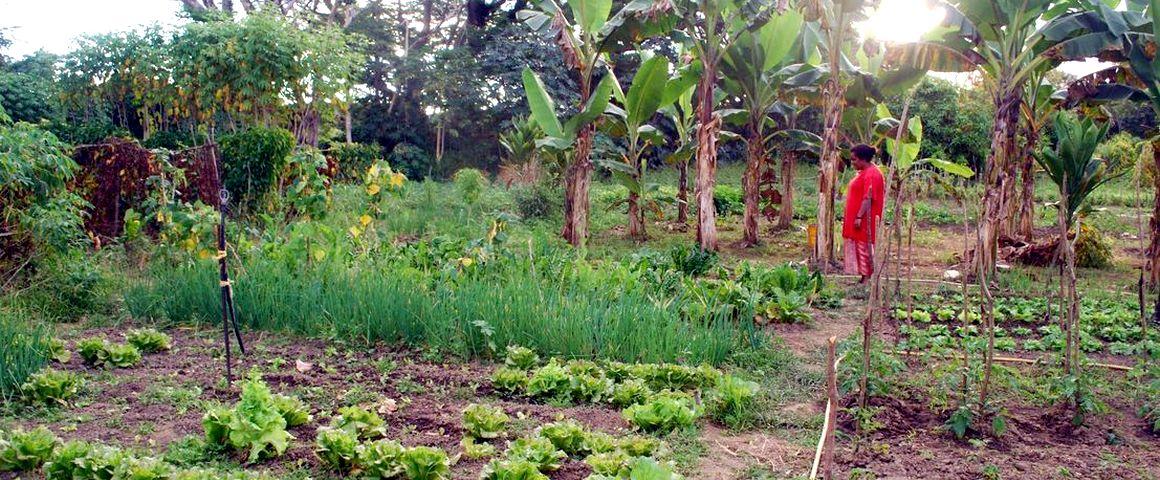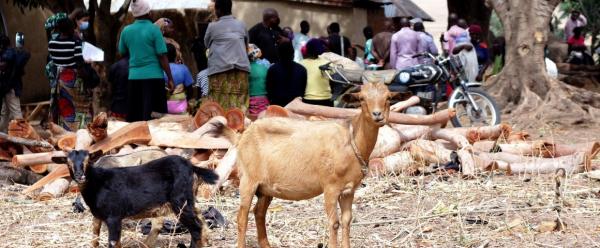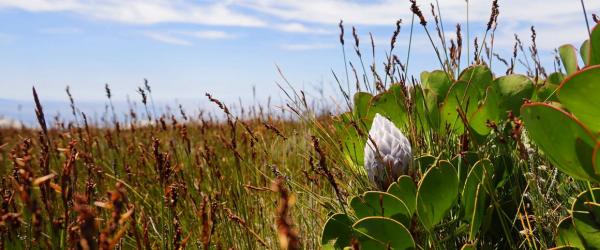Results & impact 28 October 2025
- Home
- CIRAD news
- News
- New Caledonia tribal agriculture
New Caledonia: tribal agriculture is a major source of income

Vegetable plot in New Caledonia © IAC-Coulon
In the French overseas territories, "many family farms do not sell what they produce. They therefore fall under the radar of conventional statistics", Jean-Michel Sourisseau, a socioeconomist at CIRAD, explains.
Assessing non-market agricultural income
CIRAD and the Institut agronomique néo-calédonien (IAC) surveyed tribal households, to assess the proportion of non-market agricultural income in New Caledonia.
The surveys were conducted in 2010, and then in 2018, under the RACINE project, involving 119 tribal households, 77 of which had participated in the first study, and 63 "official" non-tribal farmers. The results have now been published in the French Ministry of Agriculture and Food's Notes et études socio-économiques.
Those field surveys served to determine total agricultural production, in other words at farm gate: the proportion that is sold, and that which is self-consumed or exchanged with neighbours, for instance on traditional occasions (baptisms, weddings, funerals, etc.).
Production is largely underestimated
"Right from the 2010 surveys, our results showed that agricultural production by tribal households in New Caledonia was very largely underestimated in conventional statistics. For instance, production of yam, a tuber emblematic of tribal agriculture, was actually ten times higher", Jean-Michel Sourisseau points out. "Moreover, although the share sold accounted for less than 10% of revenue, when we translated total production into financial value, that doubled market production in New Caledonia."
"In 2018, agricultural production still contributed very little to monetary income among tribal households, but it maintained an essential role in terms of non-market value and identity", says Cédric Gaillard, an economist and statistician at CIRAD specializing in household micro-economics. "And while non-tribal agriculture is more professional and geared towards markets, the people concerned also practise self-consumption and gifting or exchanges."
"An economic and social buffer"
"Between 2010 and 2018, we saw that agriculture remained just as important for tribes, providing a quarter of their resources. In an increasingly difficult context, agriculture acted as an economic and social buffer, equivalent to conventional social aid, for these households", Jean-Michel Sourisseau stresses.
The project has also looked at Guadeloupe, through a study that was more exploratory and not statistically representative of the population. Despite being on a smaller scale, the study demonstrated that unrecorded smallholdings play a considerable role.
Specific aid for this sort of atypical agriculture
Based on these results, the researchers involved suggested supporting this type of informal agriculture, but not just in any way. "People living in tribes do not want to become more professional or have better market access", Cédric Gaillard points out. "Rather than modernizing the sector to make it do something different, we should provide support to allow it to work better: recognizing it to avoid its devaluation and facilitating access to seed, plots and small-scale irrigation systems."
In the same way, food policy could make use of this production capacity to promote vegetables and pulses that are not widely consumed on the island, particularly since the survey also showed that tribal agriculture benefits from little in the way of equipment or infrastructures. "These types of agriculture vary substantially, but most of the people involved do the same thing: they grow a bit of fruit, tubers, and vegetables", Jean-Michel Sourisseau explains. "And even if they are quite skilled, the agriculture they practise is traditional and seasonal, with relatively homogeneous production systems", Cédric Gaillard adds. "For instance, for want of irrigation, there is little market gardening, hence few vegetables, which impacts on diets."
What remains is to promote the merits and importance of this type of farming. "Depending on the opportunities available, we could also think about replicating this approach in other Pacific territories where we are already working, such as Wallis and Futuna", Cédric Gaillard concludes.
An original methodology
The scientists opted to study income in terms of "livelihoods". Jean-Michel Sourisseau stresses the merits of combining quantitative approaches (such as those used by the Réseau d’information comptable agricole) and qualitative approaches, to better understand the different functions fulfilled by complex activity systems, which are very common in rural areas overseas.
Partners
- Institut agronomique néo-calédonien (IAC)
- French National Research Institute for Agriculture, Food and Environment (INRAE)



























